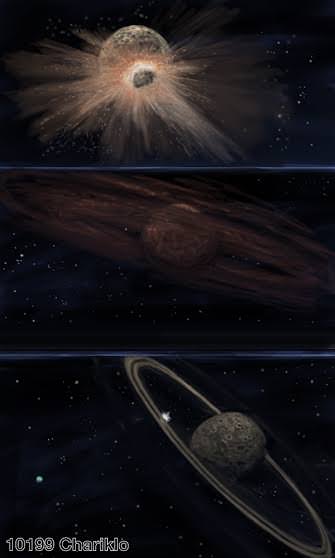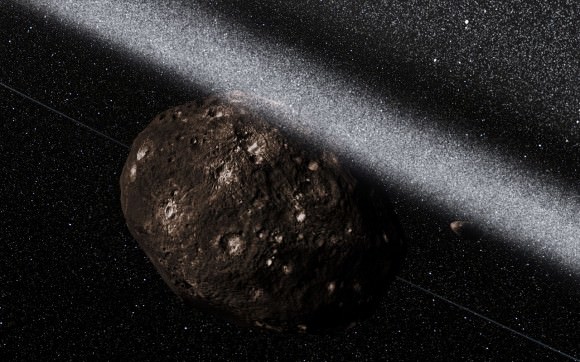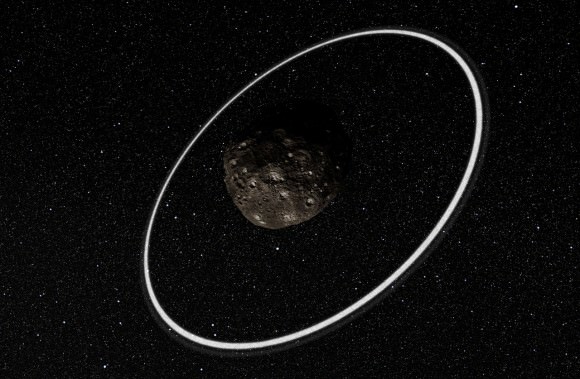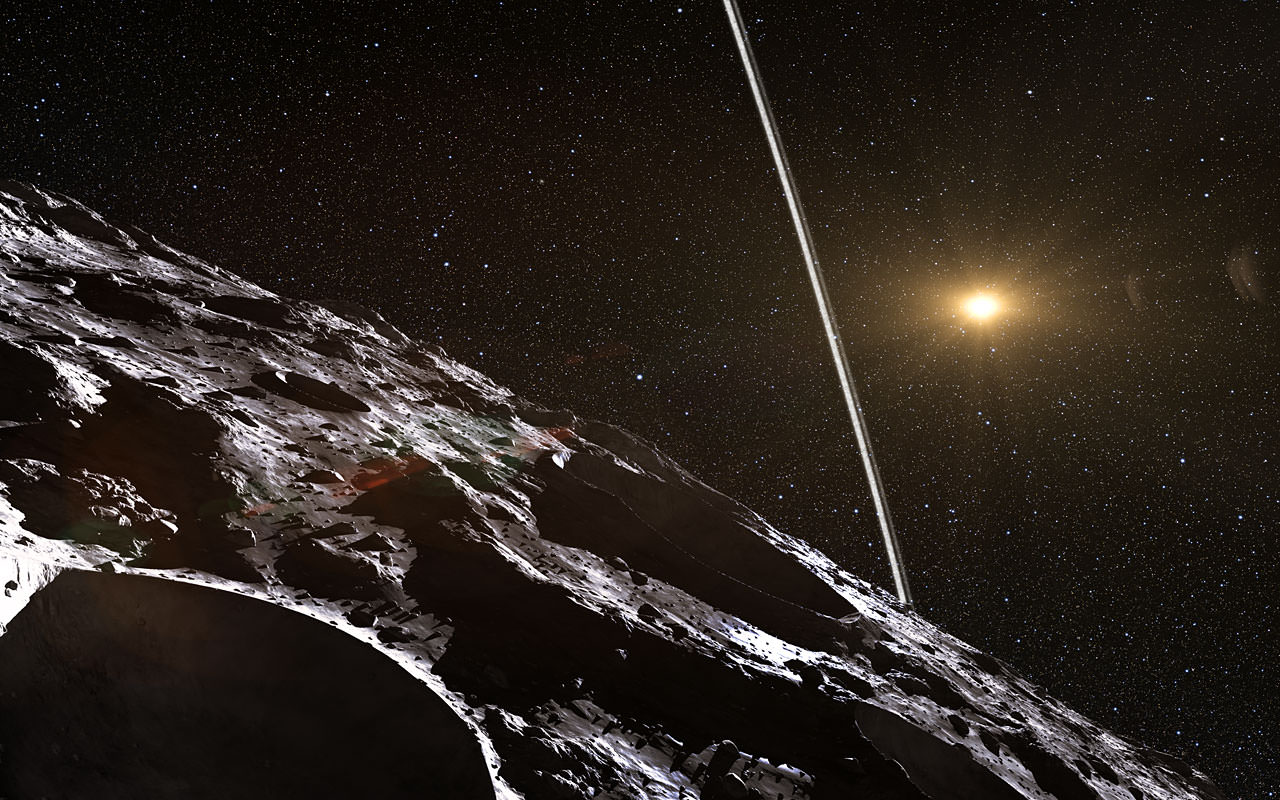Rings are a tough phenomenon to spot. As late as 1977, astronomers thought that the only thing in the solar system with rings was the planet Saturn. Now, we can add the first asteroid to the list of ringed bodies nearby us. The asteroid 10199 Chariklo hosts two rings, perhaps due to a collision that caused a chain of debris circling its tiny surface.
Besides the 250-kilometer (155-mile) Chariklo, the only other ringed bodies known to us so far are (in order of discovery) Saturn, Uranus, Jupiter and Neptune.
“We weren’t looking for a ring and didn’t think small bodies like Chariklo had them at all, so the discovery — and the amazing amount of detail we saw in the system — came as a complete surprise,” stated Felipe Braga-Ribas of the National Observatory (Observatório Nacional) in Brazil, who led the paper about the discovery.

The rings came to light, so to speak, when astronomers watched Chariklo passing in front of the star UCAC4 248-108672 on June 3, 2013 from seven locations in South America. While watching, they saw two dips in the star’s apparent brightness just before and after the occultation. Better yet, with seven sites watching, researchers could compare the timing to figure out more about the orientation, shape, width and more about the rings.
The observations revealed what is likely a 12.4-mile (20-kilometer)-wide ring system that is about 1,000 times closer to the asteroid than Earth is to the moon. What’s more, astronomers suspect there could be a moon lying amidst the asteroid’s ring debris.

If these rings are the leftovers of a collision as astronomers suspect, this would give fodder to the idea that moons (such as our own moon) come to be from collisions of smaller bits of material. This is also a theory for how planets came to be around stars.
The rings haven’t been named officially yet, but the astronomers are nicknaming them Oiapoque and Chuí after two rivers near the northern and southern ends of Brazil.
Because these occultation events are so rare and can show us more about asteroids, astronomers pay attention when they occur. Part of the Eastern Seabord enjoyed a more recent asteroid-star occultation on March 20.
The original paper, “A ring system detected around the Centaur (10199) Chariklo”, will soon be available on the Nature website.
Source: European Southern Observatory



Any estimates on how long asteroid rings can be stable for, putting an upper bound on how long ago the collision could have occured?
Look here for possible info on ring stability:
http://en.wikipedia.org/wiki/Planetary_ring
This exemplifies the mysterious nature of the unknown cosmos. The dynamics of planet formation are as active as when the Universe began. As time marches on many unanswered questions will be discovered only to find more doors that need opening.
When I was a kid in the 70’s I had wet dreams about these kinds of discoveries that I’d see in the future. Awesome to be alive now!
This asteroid’s ring will make a great fuel depot someday in the future. All the water just waiting to be turned into H2 and O2. Too bad it’s so far away.